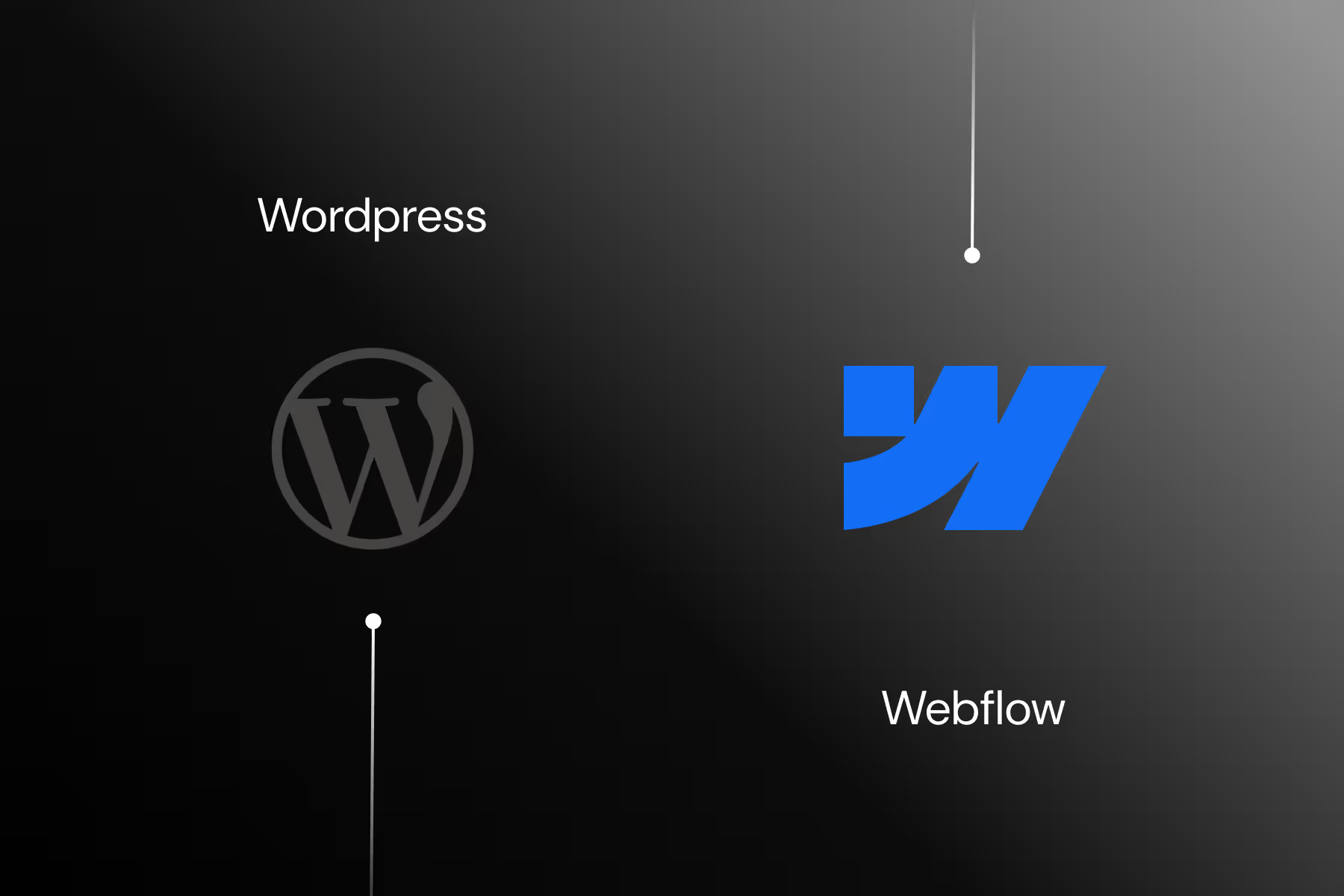WordPress vs Webflow in 2025 - Practical Guide

Choosing the right website platform can be confusing. With so many options available, people often wonder which one will actually let them manage, update, and present their site the way they want, without unexpected snags or extra complexity.
WordPress: Still powerful, but not without friction
Where WordPress works well:
WordPress is open-source and has powered a significant share of the web for years. Its main strength is flexibility, users pick from a wide range of themes and plugins. Blogs, portfolios, news sites, and stores can all be built with the right combination of tools. For those who want substantial community support or are interested in custom development, WordPress offers plenty of resources and tutorials.
- You want to host it anywhere, with full control over everything.
- You need custom functionality and plugins to support it.
- You already have developers familiar with it.
What can get tricky:
The system’s openness comes with regular maintenance: updating the core, plugins, and themes is essential to staying secure and stable. Page speed and performance vary based on the chosen host and plugin stack. Complex changes often require PHP or use of external page builders. For anyone seeking a highly customized look or workflow, some development knowledge usually helps.
- Most features rely on third-party plugins.
- Security patches, plugin updates, and theme conflicts are common.
- Page builders can feel clunky or restrictive.
- Performance can vary a lot depending on setup.
- There’s usually a handoff between design and development.
Webflow: A more visual, modern alternative
Where Webflow works well:
Webflow is a visual web design tool with a focus on real-time editing and custom layouts. Many appreciate how close the platform’s design view is to a finished website—elements can be adjusted visually, and the platform outputs clean, semantic code. Built-in features like hosting, SSL, and backups mean users can focus mostly on design and content, not configuration.
- You want full design control without writing code.
- You care about speed and clean performance out of the box.
- You’re not looking to manage servers, plugins, or security.
- You’re building a marketing site, portfolio, or CMS-based site.
What can get tricky:
Plans include hosting as standard, so prices are clearer but can be higher than very basic WordPress setups. While Webflow covers most general needs out of the box, its third-party integration library isn’t as extensive as WordPress’s plugin ecosystem. There is a learning curve, especially for those unfamiliar with web design concepts.
- There’s a learning curve if you come from traditional CMS tools.
- Prices are higher than WordPress setups.
Comparing Both: What’s Different?
- Design Workflow:
WordPress typically revolves around picking a theme (and customizing it, often with additional plugins). Webflow starts with a blank canvas for total layout freedom, best suited for those who want visual control. - Content & Site Management:
WordPress shines for content-heavy sites and frequent publishing, especially blogs and newsrooms. Webflow’s CMS is more structured, making it easy to manage portfolios or simple landing pages. - Maintenance:
WordPress relies on the user for maintenance, including updates, backups, and security scanning. Webflow handles all these aspects automatically. - Performance:
WordPress site speed is determined by hosting quality and plugin usage. Webflow sites run on built-in fast hosting by default. - Cost Structure:
WordPress itself is free; hosting, themes, and plugins make up the total cost. Webflow’s costs are subscription-based and include most essentials, with fewer add-on surprises.
Conclusion
WordPress and Webflow both support a wide range of website projects. WordPress appeals to those who need flexibility, plugin options, and open-source access for custom work or blogging at scale. Webflow is ideal for anyone wanting design-driven control, visual editing, and less concern for behind-the-scenes upkeep.
The best choice is the one that fits the user’s workflow, technical comfort, and long-term plans for the site, there’s no single “right” answer, just a set of options that match different needs.
FAQ's
1. Is Webflow better than WordPress for SEO?
Both platforms can be SEO-friendly if set up properly. Webflow has built-in SEO tools like clean code, fast loading, and easy meta controls. WordPress also supports strong SEO, especially with plugins like Yoast, but it depends on your setup and hosting.
2. Can I migrate my WordPress site to Webflow?
Yes, but it’s not automatic. Webflow doesn’t have one-click imports from WordPress, so content migration is usually manual or done through third-party tools like Udesly or CSV import. Design will need to be recreated from scratch.
3. Which is cheaper, Webflow or WordPress?
WordPress can be cheaper upfront, especially with low-cost hosting. But long-term costs add up with plugins, developer help, and maintenance. Webflow has higher fixed pricing but includes hosting, CMS, and security, with fewer surprises.
4. Can I use Webflow for blogging?
Yes, Webflow’s CMS supports blog posts, categories, tags, authors, etc. It’s great for content publishing.
5. Which platform is easier to manage in the long run?
Webflow is usually easier, no plugin updates, no security patches, no backups to worry about. WordPress gives you more control, but that also means more responsibility over time.
Ditch the delays. launch your webflow website faster.
Start your project with a partner who values speed and seamless communication.
.avif)
.avif)